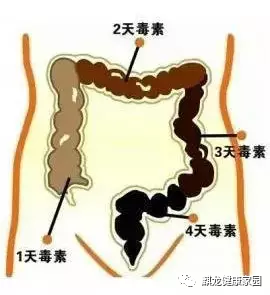

Olfactory examination includes two aspects: listening to sounds and smelling odors. It allows the practitioner to understand various abnormal sounds and smells emitted by the body to diagnose the condition.Smelling odors primarily involves detecting abnormal smells from the patient’s body, excretions, and the environment to assess the condition and determine the nature of the disease, such as cold, heat, deficiency, or excess.
Body Odors
1. Halitosis: This refers to foul odors emitted from the mouth when the patient opens it, commonly seen in oral diseases or individuals with gastrointestinal heat.

Halitosis caused by oral diseases can be seen in conditions like dental caries, gingivitis, or poor oral hygiene. Halitosis due to gastrointestinal heat is often associated with stomach fire, food stagnation, or damp-heat in the spleen and stomach.
2. Sweat Odor: The odor of sweat varies depending on the cause of sweating. External invasion of the six excesses, such as wind, or insufficient defensive yang leading to excessive sweating without odor. In cases of excess heat in the qi level or prolonged illness with yin deficiency and excess fire, sweat may be abundant and have a sour, rotten smell. In cases of bi syndrome with prolonged wind-damp invasion, sweat may be yellow and have a distinct foul odor. If a patient with edema sweats and has a “urine-like odor,” it indicates a critical condition.

3. Nasal Odor: This refers to foul odors emitted from the nasal cavity during exhalation. There are three causes:

① Nasal discharge that is yellow, thick, and foul-smelling, persisting and recurrent, indicates nasal phlegm (bi yan).
② Nasal ulcers, such as those caused by syphilis, leprosy, or cancer, can produce foul odors.
③ Internal organ diseases, where exhaled breath has a “rotten apple smell,” indicate severe diabetes; if the breath has a “urine-like odor,” it is often seen in patients with edema, indicating a critical condition.
4. Body Odor: Body odor can arise from ulcers, abscesses, or conditions like hyperhidrosis.

Excretion Odors
Patients can also perceive the odors of their excretions. Therefore, abnormal odors from excretions such as phlegm, urine, feces, and menstrual discharge can be assessed through inquiry. Generally, diseases caused by damp-heat or heat pathogens produce excretions that are turbid and foul-smelling; diseases caused by cold or cold-damp pathogens produce excretions that are clear and without special odors.
1. Vomit with foul odor is often due to excessive stomach heat. If the vomit has a sour, rotten smell and appears undigested, it indicates food stagnation; if the vomit is fishy and contains pus or blood, it may indicate a gastric abscess; if the vomit is clear and watery without odor, it indicates cold in the spleen and stomach.
2. Belching with a sour smell is often due to excessive heat in the stomach or food stagnation. Belching without odor is often due to liver qi invading the stomach or cold pathogens affecting the stomach.

3. Urine with a foul odor, yellow and turbid, indicates an excess heat condition. If the urine is clear and long, with a slight fishy smell or no special odor, it indicates a deficiency or cold condition.
4. Feces with a foul odor, yellow and watery, or with red or white pus and blood, indicates damp-heat in the large intestine. In children, feces with a sour smell and undigested food indicate food stagnation. Watery diarrhea with a fishy smell indicates cold deficiency in the spleen and stomach.
5. Flatulence with a rotten egg smell is often due to overeating, food stagnation in the middle burner, or constipation. Continuous flatulence with sound but no odor often indicates liver qi stagnation and poor bowel movement.

6. Menstrual or postpartum discharge with a foul odor is due to heat pathogens invading the uterus. Discharge with a foul odor and yellow color indicates damp-heat downward; discharge with a fishy odor and white color indicates cold-damp downward.
Room Odors
The odors in a sickroom are emitted from the body and its excretions. Epidemic diseases often begin with foul odors that can fill the room. A light odor may linger around the bed curtains, while a strong odor fills the entire room. A bloody smell in the room often indicates blood loss. A putrid smell indicates purulent ulcers. A corpse-like smell indicates organ decay. A urine-like smell is often seen in late-stage edema. A rotten apple smell is often seen in diabetes.
(Images and text are sourced from the internet)
(Note: The content regarding diagnosis and treatment methods is provided for readers to understand TCM theoretical knowledge. Treatment methods are complex and varied; self-diagnosis and medication are not recommended. If you have similar symptoms, please seek professional medical assistance.)
Recommended reading: Jinlongdai can connect and cup is grandly launched.

